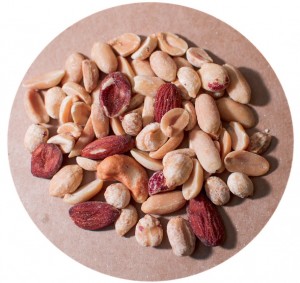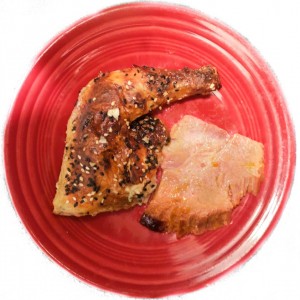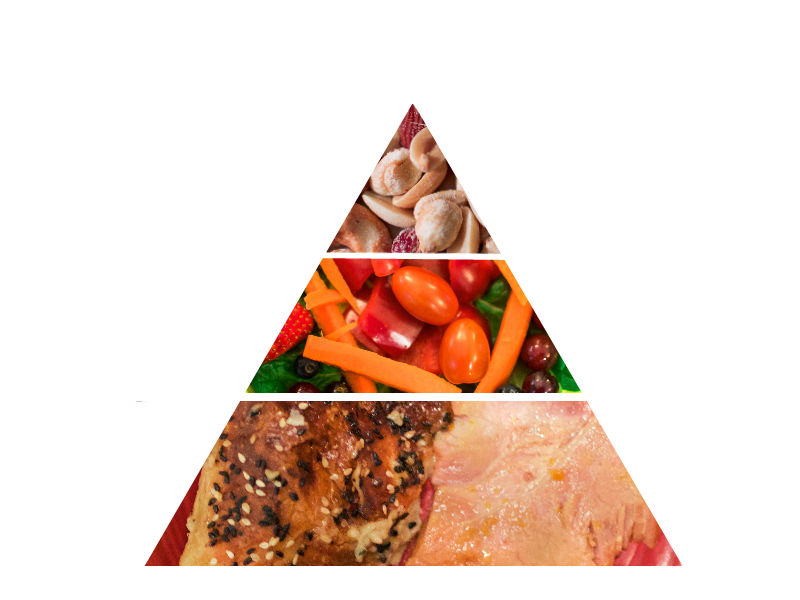Photos by Katie Williams
In today’s fad diet culture, few eating plans stand the test of time. Enter the paleo diet, an eating plan that has literally done just that.
 As its name suggests, the crux of this eating style comes from the belief that Paleolithic humans had the right idea when it came to eating. The diet eliminates any foods—like dairy and grains— that were developed after the establishment of current agrarian methods, limiting dieters to produce, meat, fish and nuts. This is where the controversy lies: Some dietitians argue that removing complete food groups from one’s daily diet isn’t healthy, whereas others embrace the trend.
As its name suggests, the crux of this eating style comes from the belief that Paleolithic humans had the right idea when it came to eating. The diet eliminates any foods—like dairy and grains— that were developed after the establishment of current agrarian methods, limiting dieters to produce, meat, fish and nuts. This is where the controversy lies: Some dietitians argue that removing complete food groups from one’s daily diet isn’t healthy, whereas others embrace the trend.
Susan Reardon, a National Academy of Sports Medicine-certified personal trainer and and Institute of Integrative Nutrition certified-nutrition and lifestyle coach, says paleo is effective when it comes to losing weight.“The paleo diet works great,” she said, explaining that with the absence of both grain and dairy, two calorically dense food groups, paleo practitioners stick to healthy fruits, vegetables, nuts and animal proteins, which can benefit an active lifestyle.
 Nonetheless, Reardon agreed that, in some cases, cutting out major food groups could potentially lead to an eventual intolerance of the nutrients that are absent. In the case of the paleo diet, individuals could be at risk of developing intolerance to gluten, which is linked to the consumption of grains, or lactose, which is linked to the consumption of dairy. “Lactose intolerance occurs when the small intestine does not produce enough of an enzyme called lactase,” Reardon explained. “Your body needs lactase to break down, or digest, lactose.”
Nonetheless, Reardon agreed that, in some cases, cutting out major food groups could potentially lead to an eventual intolerance of the nutrients that are absent. In the case of the paleo diet, individuals could be at risk of developing intolerance to gluten, which is linked to the consumption of grains, or lactose, which is linked to the consumption of dairy. “Lactose intolerance occurs when the small intestine does not produce enough of an enzyme called lactase,” Reardon explained. “Your body needs lactase to break down, or digest, lactose.”
After all this, the question still remains: Is paleo healthy? The answer isn’t a simple yes or no. There’s no easy or definitive solution to this question because diet choices revolve around a person’s biological and personal needs, a principle that Reardon calls bioindividuality. In other words, all humans are built differently, and each individual must determine which eating style works best for his or her body. Some people, Reardon explained, cannot cut out dairy or grains due to their metabolic needs, while others may not have a problem doing so.
 Doctor Gordon Adomdza, a Northeastern business professor, is one person who did so with ease. He embarked on the paleo diet two years ago after moving to the Northeast and finding that he had gained 40 pounds and was struggling to lose the weight. After searching for solutions, he stumbled across the paleo diet and gave it a try.
Doctor Gordon Adomdza, a Northeastern business professor, is one person who did so with ease. He embarked on the paleo diet two years ago after moving to the Northeast and finding that he had gained 40 pounds and was struggling to lose the weight. After searching for solutions, he stumbled across the paleo diet and gave it a try.
It worked, but Adomdza said he did have some difficulty with the diet.“It got boring,” he admitted. “I’m not a great cook, so I had a hard time making different meals out of the same ingredients.”
Both Reardon and Adomdza had the same sentiment: “It’s not for everyone.” The paleo diet is only healthy if it fits both a bodies nutrition and training needs. In the end, the safest way to approach this, or any, diet is by visiting an expert for a personal assessment of your own body’s needs.
